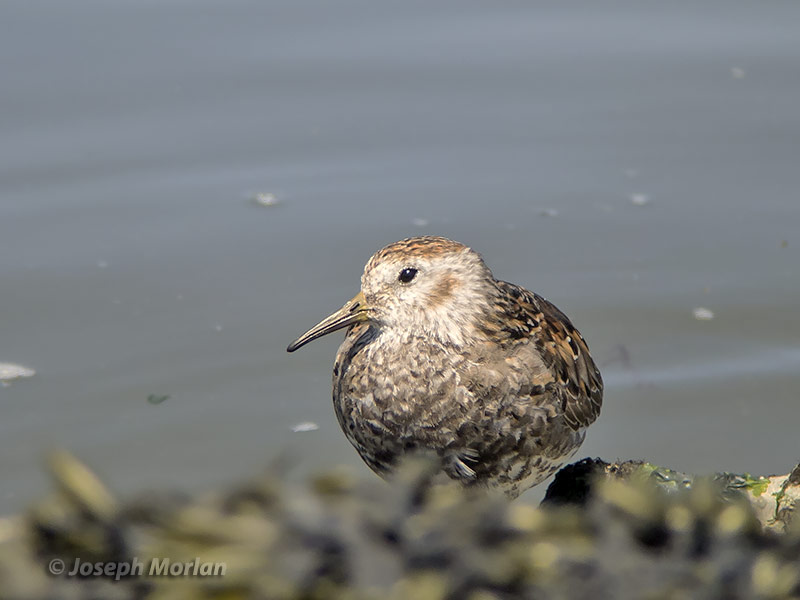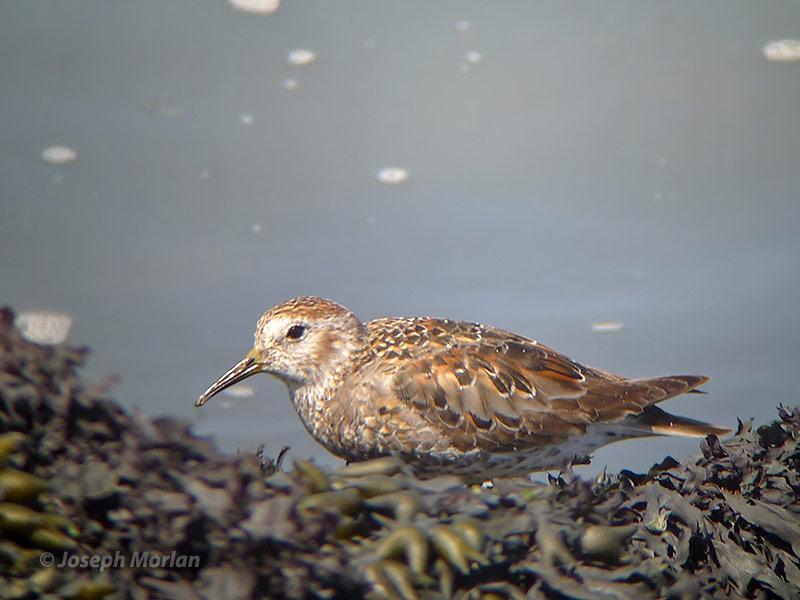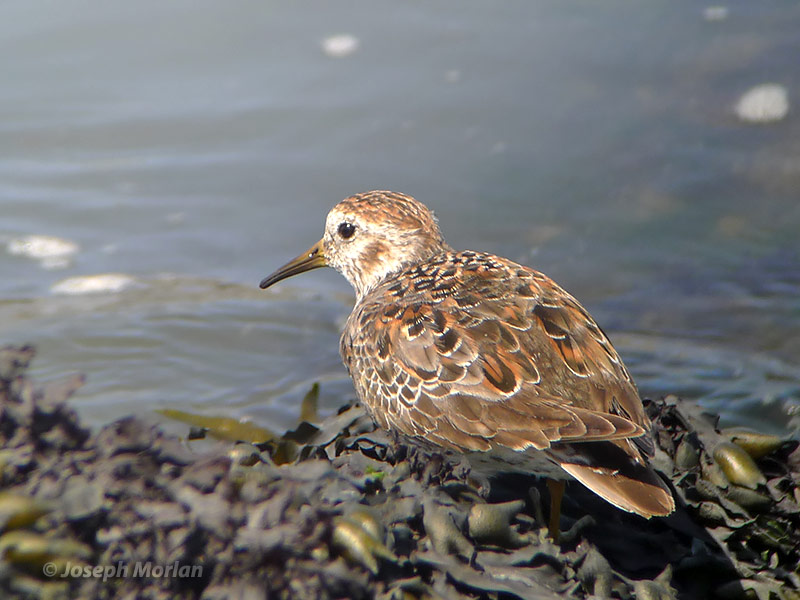



This is the same individual present since early November 2019 having molted into nearly full breeding plumage. A few worn gray formative scapular and mantle feathers have been retained. The bird was not easy to find as it foraged within rocks and kelp about 50 meters from the end of the public path. It probed deep in the kelp sometimes burying its head in the vegetation. It also liked to hide behind rocks. Rock Sandpiper has four subspecies. The nominate Pribilof race is larger and paler in all plumages. The others are distinguishable only in breeding plumage. These photos show the upperpart feathers with rich chestnut lateral fringes and white tips. This pattern is typical of the Northern Bearing Sea race C. p. tschuktschorum. The extensive blackish breast patch with white mottling, the mixture of streaks and spots on the flanks, and the well defined dark ear patches are also typical of this race.. Furthermore this is the only subspecies known to migrate regularly to the West Coast of North America. Digiscoped with Panasonic DMC-LX5 | Nikon FieldScope III | 30XWA | hand-held (no adapter)
Reference:
Chandler, R. (2009). Shorebirds of North America, Europe, and Asia: A photographic guide. Princeton Univ. Press.
Gill, R. E., P. S. Tomkovich, and B. J. McCaffery (2020). Rock Sandpiper (Calidris ptilocnemis), version 1.0. In Birds of the World (A. F. Poole and F. B. Gill, Editors). Cornell Lab of Ornithology, Ithaca, NY, USA. https://doi.org/10.2173/bow.rocsan.01